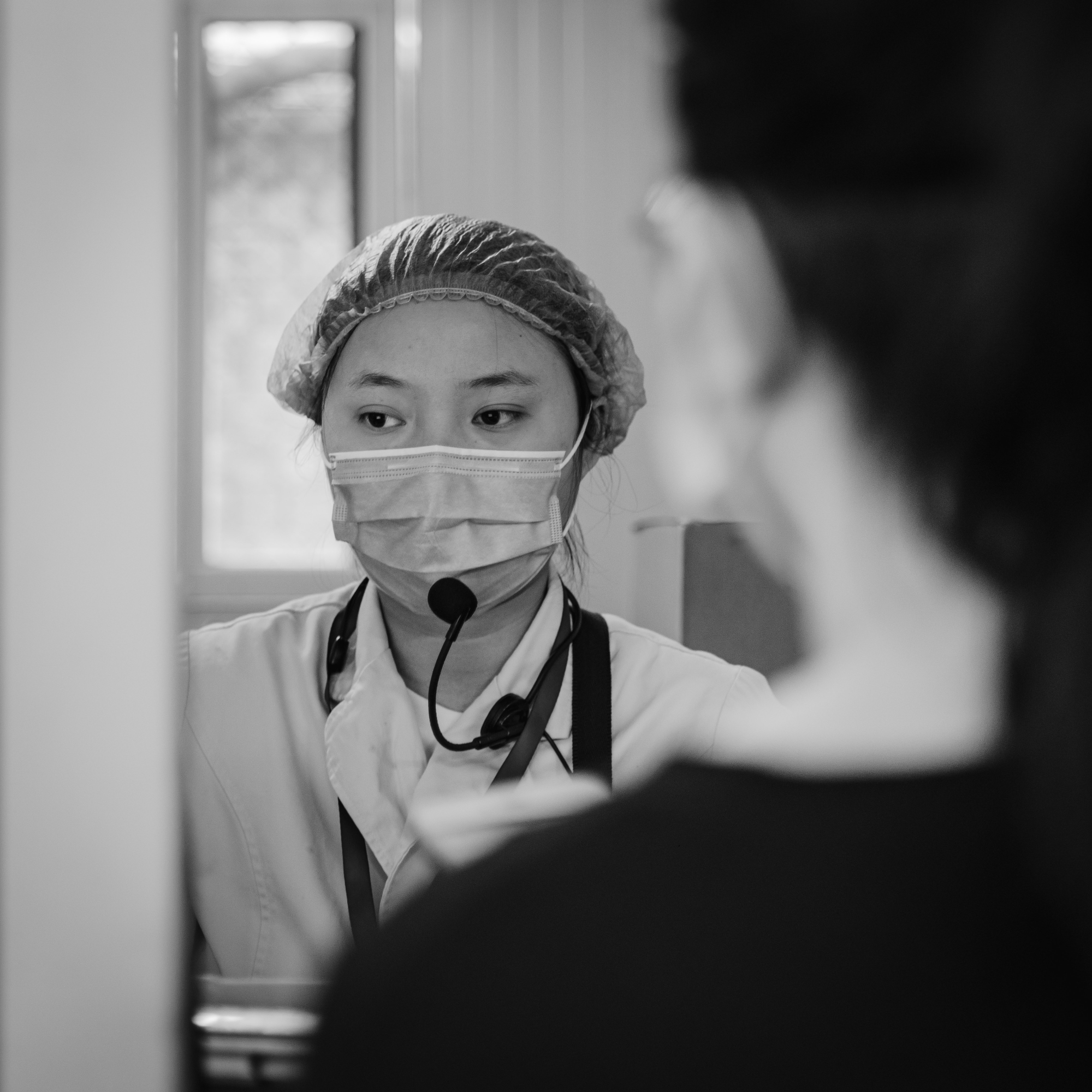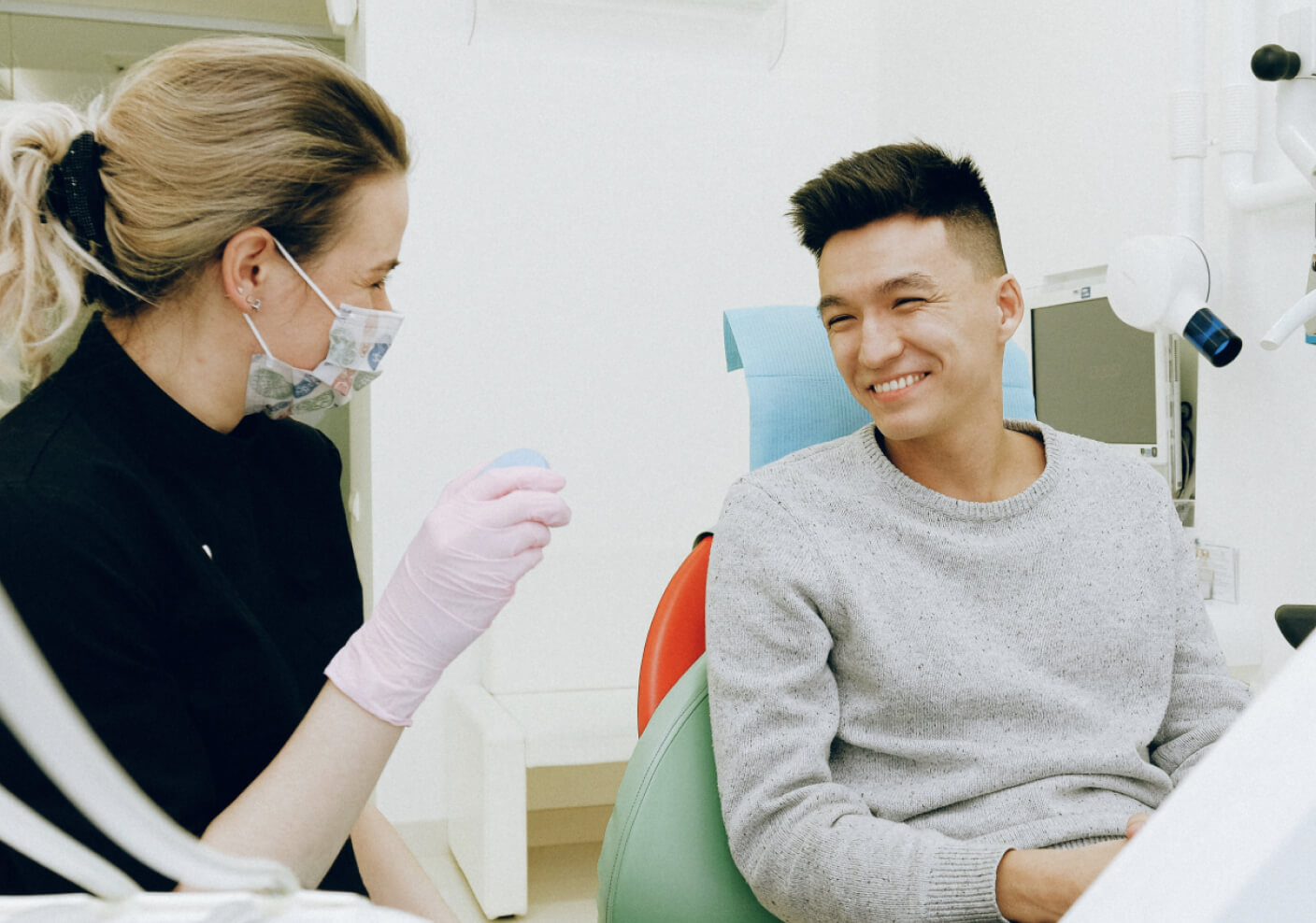Mursion recently hosted Walter Greenleaf for “A Survey of Simulation in Healthcare,” the latest installment in our Healthcare Roundtable virtual series.
Walter is a true pioneer and leading authority in digital medicine and medical virtual reality technology. He’s been a trailblazer in this field for more than 30 years and is currently researching the development of computer-supported clinical products at Stanford University’s Virtual Human Interaction Lab. He’s also a member of our advisory board.
Here is an excerpt of Walter’s presentation.
“It’s so exciting for me to be seeing the emergence of simulations and interactive environments that’s something that now can be done at a much more ubiquitous and affordable and comfortable manner.
The good news is that we’re in the middle of a digital healthcare revolution. All aspects of healthcare have transitioned from an analog world to a digital world. We’re shifting the way we do medicine. Where possible, we’re shifting it away from the hospital and the clinic to where the patient is.
Of course, with the advent of the current pandemic and COVID-19 the emphasis is on telemedicine and supporting patients wherever they are located. They don’t have to come into the clinic. It has become a priority. Digital health technology, this digital health revolution we’re going on right now is affecting all aspects of medicine, not just one particular strata. Starting at preventative health and wellness, but also improved assessments, more objective assessments, improve training. That’s one of the things that Mursion is focused on. Improved interventions to help us with providing healthcare to our patients. New ways to facilitate adherence.
Healthcare is not easy. It’s very difficult to sometimes to go on the healthcare journey and take care of your health. We need to have ways to support the patients as they go through the difficult journey and to facilitate their adherence. Then also being able to reach underserved populations and areas where it’s difficult to otherwise provide health care. The good news is that digital health technology is allowing us to do that.
We’re also entering into the era of medical wearables, where we can implant sensors that aren’t very intrusive. They collect a whole plethora of information about our health and wellness. This is providing tremendous value for us. It’s not just the physical aspects of our health that are being enhanced by better sensor technology. It’s also ways to measure our cognitive function. Our mood states are being directly impacted by the advent of machine learning improved sensors.
We now have brain health biomarkers of cognitive function that can be derived from the passive data from our cell phone use. We have voice analytics as a biomarker of anxiety and depression and pain and stress. We can capture facial expressions and use that to also help refine our evaluation of cognitive and functional status. We can use augmented reality technologies, not just to do a particular cognitive task within a virtual environment, but also to measure the micro-movements that are involved in doing that task.
What we’re seeing is the evolution of combination therapy, where we might combine a medical device with a medication, for example, to have enhanced benefits. Suffice it to say, it’s an emerging trend and something I think will be much more powerful than the ways we’ve been doing digital health previously.
With machine learning, we’re getting much better parsing all of this data and mapping it to appropriate utilizations. We’re now moving into a new zone where we’ll have passive data gathered and aggregated allowing us to collect information, not just about how we are feeling, but in our interaction with the rest of the world and using that for a better way of doing both assessments and interventions. Hand in hand with that is a change in our cultural acceptance of this. Of course, there’s some downsides and concerns about privacy, which we must address, but we are moving into a zone where technology is part of healthcare. Being able to collect information in a dynamic way with wearables et cetera, is becoming much more acceptable to people.
We’re also getting better. We can have AI actors that can be sensitive using facial expression, captures and body language scoring to have our AI systems be very aware of what’s going on. We’re also going to have much more realistic avatars that can be used for educational training and support. Of course, with the evolution of systems like blockchain, we could protect all this data that we’re aggregating.
VR Technology in the Medical Mainstream
Right now, what we call XR technologies, the amalgamation of the immersive technologies, is already having a dramatic effect as it moves to the enterprise, improving education and training such as what Mursion is doing, but also designing for manufacturing and maintenance, product design, process design. In particular, healthcare is emerging as one of the deepest verticals for the application of VR and AR technologies. Every consumer electronics company has made a significant investment into moving into this zone.
Healthcare is emerging as one of the deepest verticals for the application of VR and AR technologies.
Why use a virtual reality technology, and why use it particularly for medicine? Well, it has unique capabilities, it’s highly functional. We can slow down the speed of the world or go places we otherwise could not go. More importantly, is that we can make it deeply personal. We can leverage the power of story and narrative arcs to make the interventions, the assessments that we’re doing fit to the individual user.
Right now, we’re projecting that VR technologies will be adopted by 70 million years users within the next 6 years. Let me now be very specific about how the VR and AR technologies are being applied to medical applications. Again, it’s the full stack of healthcare, not just one particular zone of medicine that we’re seeing the interventions gather momentum. We’re seeing the technology being applied to some very important and culturally and socially expensive problems, such as managing addictions, addressing chronic pain, helping with stroke and traumatic brain injury, autism, and Asperger’s. We have now found that AR and VR technologies can make a difference, and they’re already being rolled out and being used clinically.
How Simulations Can Revolutionize Healthcare
We can shift people’s attitudes and behaviors very nicely if we can activate the power of the brain’s reward system. This allows us to activate neuroplasty changes, reinforce behaviors, reinforce learning. We can leverage mirror neurons to create empathy. It’s a very powerful way to approach both training and learning and also shifting attitudes and behavior in our patients. It’s necessary to activate a brain system in order to change it, in order to learn a cognitive skill, we have to be able to activate a cognitive process, and through cognitive behavioral therapy and by reinforced learning. We need to have a way of doing that in a repetitive way if we’re going to have someone who’s had a traumatic brain injury or a stroke go through the difficult process of rehabilitation. We need to have a context for them to motivate them and to guide them along the right therapeutic pathway.
One of the powerful things we can do is to leverage our mirror neuron systems in our brain. One technique that we found to be very successful in our lab at Stanford is to leverage mirror neurons by creating an avatar of one’s future self. By having your future self-reflect the changes that otherwise we may not be able to notice, that if we have a good diet or we get better sleep or we avoid a substance of abuse or too much nicotine or alcohol, we can have that reflect on an avatar and make the changes that we need to make and the reasons for doing that much more apparent, and leverage the power of mirror neurons to show us and motivate us to make a change in our behavior.
That’s something that’s very difficult to do in any other way. If we just hand our patients a stack of Xerox papers upon discharge, saying, “Here’s information about your problem and what you should do about it,” that’s very different than having an avatar of their clinician being able to interact with them and remind them why they go down this difficult process and to motivate them along the way.
Let me start getting very specific about how VR and AR technology is being used today. One particular area I think is important is that we can now have much more functional training using. This is one of the areas that Mursion has specialized in.
It’s really, again, all aspects of medical training that have been impacted by this, clinical skill training, specific surgical skills, but also interpersonal skills. How to use specific equipment and tools through simulation, team training, getting individuals to learn to work together as a team, support each other. How to have more than just a team within the hospital but have an emergency responder network or the city police department be able to interact in a simulation of a response to an emergency. We can do that in simulations. Again, because of our ability to put ourselves in somebody else’s point of view, we can facilitate empathy as part of that training.
Because of our ability to put ourselves in somebody else's point of view, we can facilitate empathy as part of that training.
We can take a very complex anatomy and physiology training that’s difficult to learn from a flat textbook or a videotape. We can create an immersive experience that people can understand physiology and anatomy by slowing or speeding the time of process or showing complex three-dimensional systems like the spinal tracks in a way that we otherwise could not do very easily. What I find really exciting is that we now have virtual patients, so that clinicians can practice their clinical skills and learn to handle a difficult situation that they may not encounter very often or perhaps never encountered but they need to prepare to handle it.
Again, what Mursion is doing in this area is incredibly important. Mursion has come up with virtual standardized patients that simulate different medical encounters. We can improve communication skills of a doctor delivering bad news, for example. We can enable nurses to master a given patient history and how to do a particular interview. We can enhance surgical briefing skills of a surgical team. There are many examples of the power of simulations that can be used using standardized patients.
One of the areas that I think is particularly important is how to prepare to deliver bad news in a difficult situation. Probably one of the things that almost every clinician needs to be prepared to do, and almost every clinician does not want to learn on the job. Being able to do that with a simulation is incredibly important.
Building High-Stakes Environments to Achieve Cognitive States
The next zone that I want to review with you is the progress we’ve had with coming up with much more functional and objective assessments using simulations. It’s often used in a research laboratory or a virtual reality demonstration arena to traumatize people into feeling like they’re standing on a ledge over a steep height. The reason this demo is often provided is to show the power of VR to evoke a cognitive state, in this case, a fear of heights. If we can evoke a cognitive state, then we can teach people the skills to manage that cognitive state. We can also assess the reaction using psychophysiology and self-report to that cognitive state in a controlled manner. It also allows us to do exposure therapy. We can take someone who’s had trauma and we can gradually expose them to that trauma, teach them the skills they need to manage the response to those triggers. Something that we can’t really do very well with imaginative therapy.
If we can evoke a cognitive state, then we can teach people the skills to manage that cognitive state.
If we have someone to imagine the most traumatic thing has happened to them, the brain doesn’t want to go there, but we can do it in a controlled, gradual manner using simulations. We can also do better neuropsychological assessments by capturing motion in a functional way in a virtual environment. We can do better measurements of activities of daily living assessments, which is really important for physical therapy and occupational therapy. Having a way to objectively evaluate someone’s cognitive process or mood state and reaction to different stimulus is incredibly important to the fields of psychiatry and psychology.
Moving on the next zone where we see VR and AR applied to medicine is to the zone of improved interventions. It’s still in the hands of the early adopters, but it’s moving out from the academic research labs and teaching hospitals out into clinics worldwide.
There are already a lot of groups who are using virtual environments for preoperative planning for neurosurgery, for example, to understand in a three-dimensional way, what the plan is for the surgical procedure. To be able to review that with a patient in advance, so the patient can participate in choices about the consequences of particular surgical approach.
In the fields of stroke and traumatic injury, brain injury recovery, physical occupational therapy, we’ve seen several companies emerge with very robust systems to help facilitate physical medicine. Of course, in mental health, we have such a problem, especially engendered by the pandemic and what’s been called the predicted second pandemic, of derivative problems in psychiatry and psychology. Yet, our mental health care system is backed up. We just simply do not have enough clinicians to address the need.
Fortunately, we’ve made great progress in applying VR and AR technology to address some of these key problems, to address anxiety disorders, depression, et cetera. We could do exposure therapy to help people who have phobias or have triggers as a result of a traumatic accident. We can also use exposure therapy approaches to teach people who are struggling to manage cravings and addictions by giving them a chance to practice how to resist peer pressure, for example, in a virtual bar situation, practice refusal skill training, and gain situational confidence.
We’ve also seen a lot of applications of VR for pain distraction, to distract someone from the acute procedure or an uncomfortable procedure such as an infusion. We’ve also seen VR being applied to teach people the skills they need to manage chronic pain. Again, there’s a long list of where VR has been shown through basic research to be effective in addressing problems in psychiatry and psychology, helping people with psychosis or eating disorders or obsessive-compulsive disorder, depression, autism spectrum disorder, attention deficit disorder. There’s been fantastic work showing the power of VR and AR technology in this arena.
Improving Patient Outcomes
The final zone I want to talk about is how we’ve applied virtual environments in the patient care side. Again, we can help people understand the importance of exercise or good nutrition or how to adhere to a particular procedural regime to manage their chronic disease. We can improve mood and resilience by having environments with people who also need to manage their mood disorder, for example. We can do things like address disability solutions using VR as an interface or addressing isolation by connecting people who otherwise might not have an effective way to, not just talk to each other or Zoom call like this but maybe to have an experience, go to a virtual cafe in Florence together, or a grandmother going shopping with her granddaughter through a virtual reality interface.
Again, we’ve seen some fantastic work being done where we can connect an individual with an image of their future self and have that in a dynamic way, give them feedback about the life choices they’re making and their behavior, and motivate them to stick to a particular protocol and maybe cut back on some of the disadvantageous behaviors that they might be having.
Finally, one of the powers of VR is that it’s portable, that we can provide people with a system that allows them to have a clinical experience and interact with a clinician, no matter where they’re located. I think this will allow us to reach some otherwise hard-to-reach populations.
The fact that VR systems are now affordable so that I can purchase a robust feature VR system for a third of the cost of a smartphone is really an amazing thing. VR systems are currently being used for all aspects of healthcare, prevention, evaluation, intervention, chronic disease management. I think the technology is poised to move out of the academic arena, the early-adopt arena, and being moved out into the mainstream.”
Subscribe for the latest Mursion articles and updates.
By clicking the sign up button above, you consent to allow Mursion to store and process the personal information submitted above to provide you the content requested. View our Terms and Conditions.




